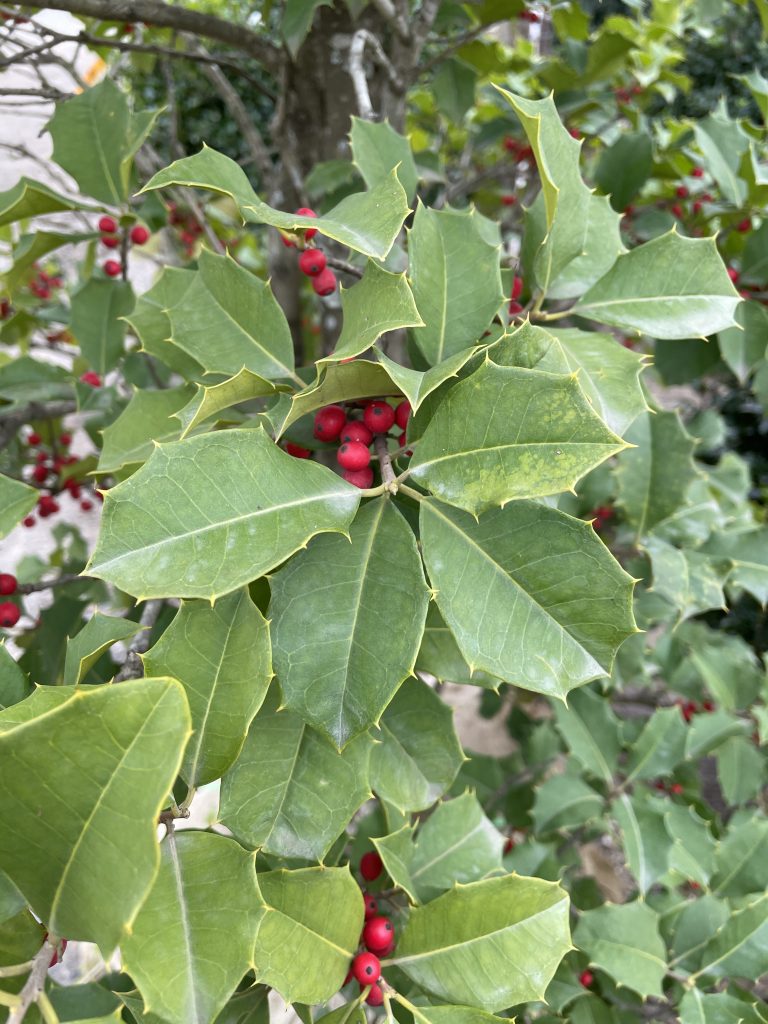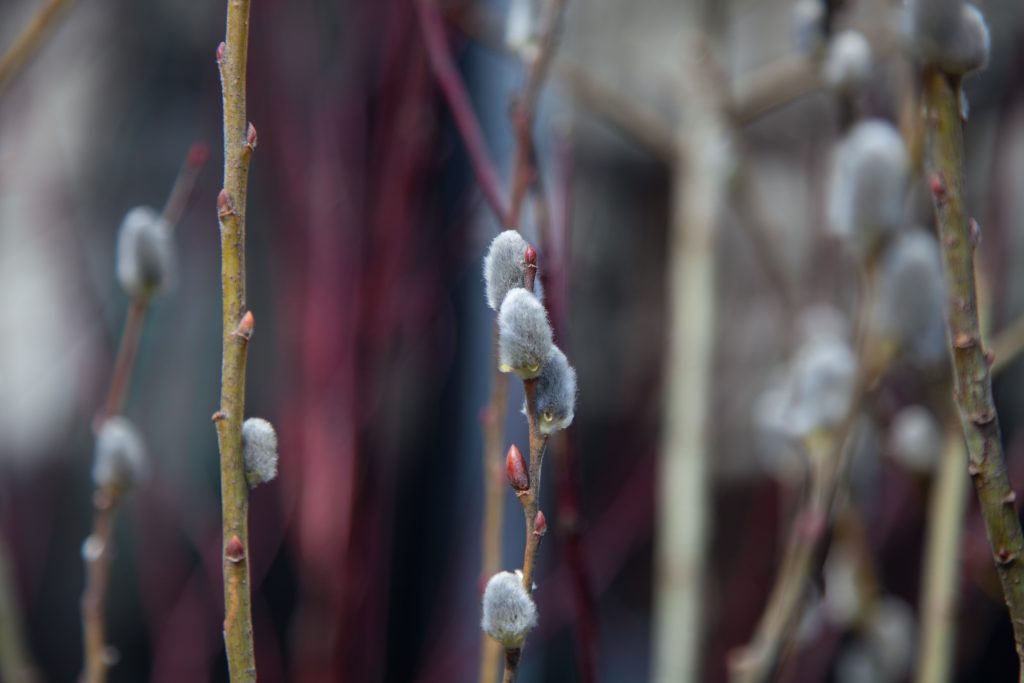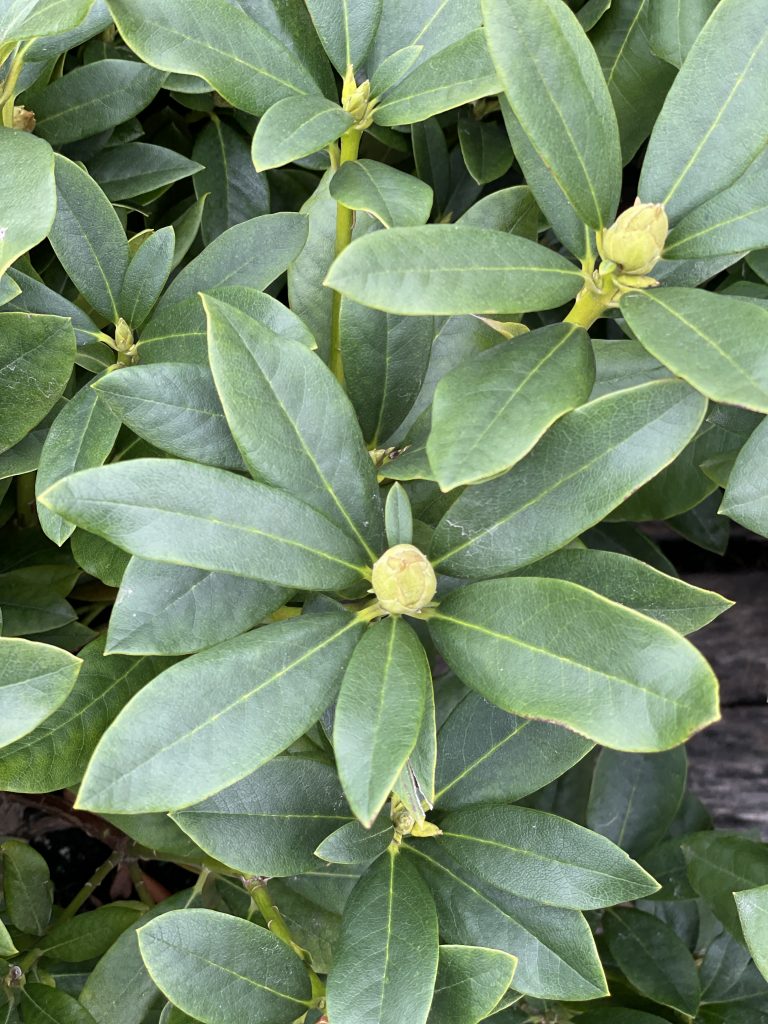
By definition, a hedge is “a fence or boundary formed by a dense row of shrubs or low trees.” A privacy hedge is a living fence within your landscape meant to provide privacy and a sense of enclosure from neighbors and those passing by on the street. The shrubs, trees or other plants that make up your privacy hedge or screen can delineate your property boundaries and can also function as windbreaks, sound barriers or a means to hide unsightly views. Thorny shrubs can do double duty and provide both privacy and security.


For many of us, when envisioning a privacy hedge, the image of an over-sheared yew or a scraggly privet pops into our minds but there are many options depending on the function and look you are trying to achieve. In general, plants that can be used will fall under one of four categories: Conifers or needled evergreens, such as arborvitae or cedar, broad-leaved evergreens like holly and rhododendron, deciduous shrubs like forsythia and smoke bush, and ornamental grasses and bamboos.
One of the biggest advantages of evergreens is that they provide a green screen all year round plus they are good at reducing wind and noise. They come in a range of greens, blue-greens, and yellows. Whether you choose needled evergreens or broad-leaved evergreens, there are a plethora of textures available, from delicate lacy needles to broad, leathery leaves. Some plants have berries which will attract birds. Choose conifers or needled evergreen trees if you want a strong vertical element and an imposing presence.
If choosing a deciduous plant, of course there will be none or few leaves in winter. Good privacy shrubs in this category will have a dense growth formation and their thick growth will continue to provide a visual barrier. Many deciduous shrubs have the advantage of interesting flowers and colorful fall foliage.
Although not a traditional choice, taller varieties of ornamental grasses and bamboo can make effective privacy screens. Ornamental grasses can be left in a natural state all winter so as to continue to provide privacy while also enhancing the beauty of the winter landscape. When choosing a bamboo use, pick a clumping variety to limit invasion.
In addition of the desired height and width of your privacy screen, one final consideration prior to choosing the plants is the look you are trying to achieve. Do you want a formal arrangement with one type of tree or shrub in a line or do you want more informal groupings of different types of plants? Consider planting a group of evergreens where you need the densest screen and fill in bare spots with deciduous shrubs or other varieties of evergreens. Also, consider height and growth rates and combining groupings of taller plants flanked by lower growing ones. There are any number of combinations and looks to choose from. Use your imagination, ask our sales staff or even have a design consultation.
The following list is intended as a guide to exploring the diverse options for privacy screening. Please note that we have primarily listed the species of plants rather than the specific cultivars or hybrids within the species. When specific cultivars or varieties are listed, they are capitalized in single ‘quotes’ and follow the species designation.
Tall Evergreen
| Abies spp. | Fir |
| Juniperus virginiana | Eastern Redcedar |
| Picea abies | Norway Spruce |
| Picea glauca | White, Canadian Spruce |
| Picea pungens | Blue Spruce |
| Pinus spp. | Pine |
| Thuja occidentalis | American Arborvitae, White Cedar |
| Thuja plicata | Western Red Cedar |
| Tsuga canadensis | Canadian Hemlock |
| Tsuga caroliniana | Carolina Hemlock |
Medium Evergreen
| Cephalotaxus harringtonia | Japanese Plum Yew |
| Chamaecyparis obtusa | Fernspray, Hinoki Cypress |
| Chamaecyparis pisifera | Sawara, Threadleaf Cypress |
| Chamaecyparis thyoides | Atlantic White Cedar |
| BAMBOO Fargesia denudata | Naked Clumping Bamboo |
| BAMBOO Fargesia nitida | Blue Fountain Bamboo |
| BAMBOO Fargesia rufa | Rufa Clump Bamboo |
| Ilex x meserveae hybrids | Blue Holly |
| Ilex opaca | American Holly |
| Juniperus chinensis | Chinese Juniper |
| Juniperus communis | Common Juniper |
| Juniperus scopulorum | Rocky Mountain Juniper |
| Picea glauca ‘Conica’ | Dwarf Alberta Spruce |
| Pieris japonica | Japanese Andromeda |
| Rhododendron spp. and cultivars | Rhododendron |
| Taxus cuspidata | Japanese Yew |
| Taxus x media cultivars | Anglojapanese Hybrid Yew |
Small Evergreen
| Azalea spp. | Evergreen Azalea |
| Buxus sempervirens | Common Boxwood |
| Cryptomeria japonica | Japanese Cedar |
| Euonymus japonicus | Japanese Euonymus |
| Ilex crenata | Japanese Holly |
| Ilex glabra | Inkberry Holly |
Deciduous
| Amelanchier canadensis | Shadblow Serviceberry |
| Aronia arbutifolia | Chokeberry |
| Azalea calendulaceum | Flame Azalea |
| Azalea schlippenbachii | Royal Azalea |
| Azalea vaseyi | Pinkshell Azalea |
| Azalea viscosum | Swamp Azalea |
| Betula nigra ‘Little King’ | Fox Valley River Birch |
| Carpinus betulus ‘Fastigiata’ | Pyramidal European Hornbeam |
| Chionanthus spp. | Fringetree |
| Cornus spp. (shrub form) | Dogwood |
| Cotinus coggygria | Smokebush |
| Crataegus viridis ‘Winter King’ | Winter King Hawthorn |
| Enkianthus campanulatus | Redvein Enkianthus |
| Fagus sylvatica (Dawyck cultivars) | Dawyck Gold, Purple Beech |
| Fagus sylvatica ‘Red Obelisk’ | Red Obelisk Beech |
| Forsythia spp. | Forsythia |
| Fothergilla major | Fothergilla, Bottlebrush |
| Hamamelis x intermedia cultivars | Witchhazel |
| Hamamelis virginiana | Common Witchhazel |
| Hibiscus syriacus | Rose-of-Sharon |
| Hydrangea macrophylla | Bigleaf Hydrangea |
| Hydrangea paniculata | Panicled Hydrangea |
| Hydrangea quercifolia | Oakleaf Hydrangea |
| Ligustrum spp. | Privet |
| Magnolia (Little Girl Series) | Magnolia |
| Magnolia stellata | Star Magnolia |
| Myrica pensylvanica | Northern Bayberry |
| Philadelphus spp. | Mockorange |
| Physocarpus opulifolius | Ninebark |
| Quercus ‘Crimson Spire’ | Crimson Spire Oak |
| Quercus palustris ‘Pringreen’ | Green Pillar Pin Oak |
| Quercus x warei ‘Chimney Fire’ | Chimney Fire English Oak |
| Rosa spp. | Rose |
| Salix discolor | Pussy Willow |
| Salix integra | Willow |
| Syringa (various hybrid cultivars) | Lilac |
| Syringa vulgaris | Common Lilac |
| Viburnum spp. | Viburnum |







